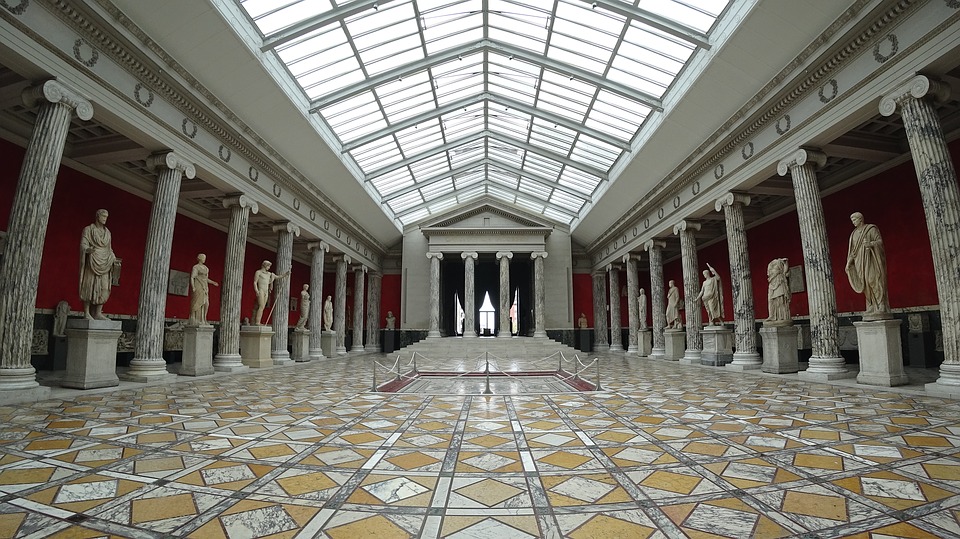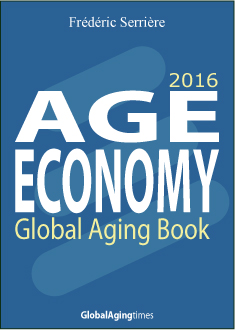Following the seminar series ‘Art, Museums, Wellbeing & Ageing’, and building upon the work to date carried out by the Age Friendly Museums Network (formerly Age Collective, funded by the Esmée Fairbairn Foundation), the Oxford Institute of Population Ageing and the British Museum began discussions regarding a project to explore the impact of demographic ageing on the museum and gallery sector.
This report examines not only issues related to the fact that people living longer, but also to the changes in pension arrangements and resources, health and caring responsibilities which too will impact on the role of older people in the museum and gallery sector. It also considers the changes within this sector and how they too will affect the way museums and galleries can and will engage with a population that is changing. This report aims to provide balance to the pessimistic picture of population ageing frequently presented in the media, generally related to concerns around rising health and social care costs. While the ageing of the population will produce change, there will be opportunities as well as challenges. Older people are key stakeholders in the museum and gallery sector as visitors, staff, volunteers, members, donors and trustees. A clearer understanding of population ageing and its impacts will allow the museum and gallery sector to both embrace these opportunities and prepare for any challenges ahead.
Engagement with museums and galleries as visitors and volunteers is beneficial for older people in a number of ways highlighted throughout this report, including in terms of promoting social engagement, health and wellbeing and reducing isolation. Older people too are beneficial to museums and galleries as visitors, volunteers, staff, donors and trustees, and also can be engaged as creators of museum content. The ageing of the population could then be cause for celebration in the sector, despite the fact that it is often couched in pessimistic ‘demographic time bomb’ terms in the media. It could be the case of a double-dividend, as older people reap the rewards of museums’ and galleries’ expanded remit to focus on issues related to health and wellbeing in the community, while the sector also sees an increase in the number of potential stakeholders from this age group. However, there are several caveats which are important considerations. First, our ageing population is living longer, but not necessarily healthier lives. Healthy and disability-free life expectancies are not rising at the same rate as general life expectancies, and differences are more pronounced along divisions such as wealth, education, geography and occupation. Our ageing population is going to be a diverse one, not only in terms of health and disability but also ethnicity when compared with previous generations.
It will also be an ageing population with increasing responsibility in terms of extending their working lives and the provision of care. Museums and galleries therefore need to consider these issues when they seek to engage with older people. At the same time, museums and galleries too are facing their own opportunities and challenges. On the one hand their remits are expanding while ressources are shrinking, but on the other, the increased recognition of their rôle in health and wellbeing has opened up new possibilities for collaboration and expansion. Again, this is an area where there are both challenges and opportunities, with potential ‘win-win’ scenarios for all involved. In order to exploit these opportunities, museums and galleries need to view older people as an asset, rather than purely an audience. Where programmes are ‘done with’ rather than ‘done to’ older people, the greatest rewards are reaped. By focusing on older people as purely an audience, it would be easy to see an increasingly diverse ageing population as a problem in a time of reduced ressources. However, if viewed as stakeholders, whose contributions to collections, to volunteering, as staff, donors and members are encouraged, the benefits of an ageing population for the sector increase.
Even so, audience engagement is still a core part of the work of museums and galleries and they will need to adapt their approach to an ageing population which is becoming increasingly diverse at a time when museums are being expected to do more, with less. The case studies have provided a number of examples of interesting work in museums and galleries which navigates some of these issues. Where people are unable or unwilling to attend museums and galleries in person, outreach can be important. This outreach can come in of different forms, from lectures to object handling to artistic activities, and museums and galleries will need to be increasingly creative to reach wider audiences with potentially less resource. The provision of resources such as ‘memory boxes’ and apps can also bring museum and gallery collections to audiences who may be unable to attend in person.
The opportunities to engage digitally with new audiences will expand both as the technology improves but also as successive generations become more familiar with smart technologies. Partnership with and training of colleagues and stakeholders from other sectors, such as carers and health and social care professionals, provides a sustainable way of reaching the widest audience. In a period of reduced resources, partnerships are key. They allow organisations to share resources and expertise and a means to achieve wider goals. The increased recognition of the role arts and museums can play in health and wellbeing will provide the opportunities to work with health and social care professionals, enhancing the experience of patients and service users but also providing the opportunity for professional development and cross-sector learning. Intergenerational work is also important, as it allows museums and galleries to engage with younger people as well as older and therefore does not risk marginalising and excluding the former by focusing on the latter. It also has increases the likelihood of engaging those who fall into a museum’s profiling of an ‘older person’ but may not apply that profile to themselves. Museums and galleries have a great deal to offer older people – as diverse a group as they are – in terms of their wellbeing, health and social engagement. At the same time, older people have a contribution to make to museums and galleries, and in turn their wider communities. The pessimism about the ‘demographic timebomb’ and concerns about resources needs therefore to be tempered with recognition of the value of older people as active participants in galleries and museums, and the wider community.


